How a Tor is formed; Firstly you have a normal hilly landscape; 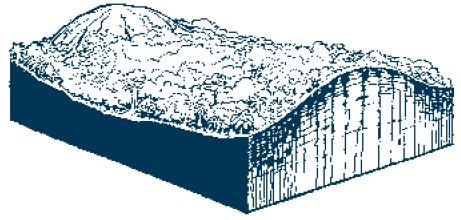 Then erosion takes place exposing the harder granite beneath leaving it exposed to be weathered into tors.
Then erosion takes place exposing the harder granite beneath leaving it exposed to be weathered into tors. 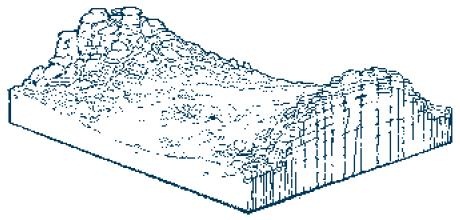
Dartmoor has a varied and vast amount of different geology as can be seen from the following chart. 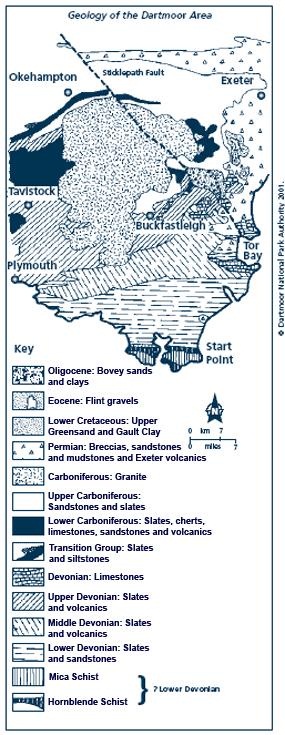
Granite The name granite comes from the Latin granum, a grain. Granites are composed of fairly large crystals and have an irregular granular or granitoid texture. Granite is a group name for a family of plutonic or deep-seated acidic igneous rocks. Dartmoor granite is made up mainly of quartz (glassy, grey/white crystals of silicon dioxide), felspar (particularly orthoclase - potassium aluminum silicate: but also plagioclase) and biotite, a type of mica - a complex hydrated silicate of aluminum and potassium with iron, magnesium and fluorine. Dartmoor granite is also characterized by a relatively high proportion of tourmaline, which is blacker than biotite and distinguishable by its finely grooved surface. Some geologists have identified three major types of Dartmoor granite - the contact granite contaminated by minerals from the surrounding rocks; the tor granite which contains the large megacrysts typical of many of the tors, and the finer grained blue granite.
An example of Megacrysts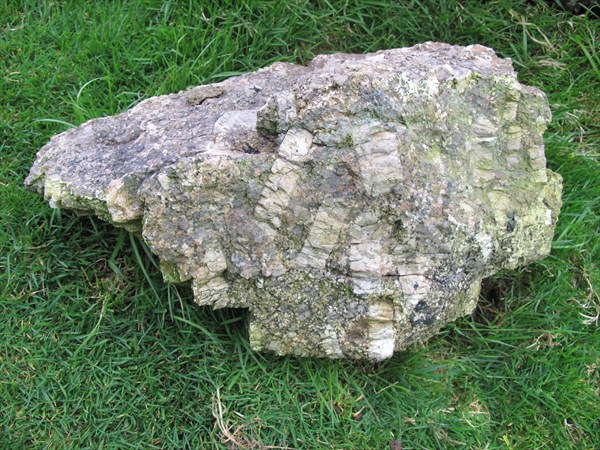
To log this cache;
Please email me through my profile the answers to the following questions, if i do not receive the answers from you I WILL delete your log.....Simples :-)
1/ Please measure the length & width in Millimeters please, of three of the larger crystals on the NW face of Haytor where the arrow points @ N50 34.820 W003 45.328
A/ Optional photo of the above (not in the log please)
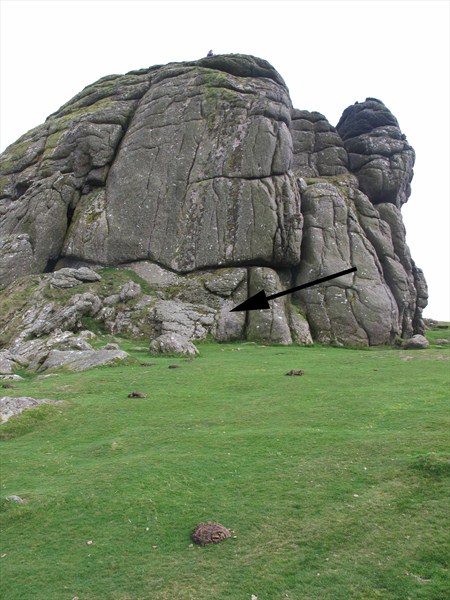
2/ Please explain why you think that these large crystals cooled quicker or slower than the smaller crystals?
3/ Optional photo of yourself with gps at Haytor (can be on the log)
4/ The Dartmoor Granite is connected at depth with the other granite masses of Cornwall, This forms an enormous granite intrusion known as what?
5/ Temperature approaching 1000° C, altered surrounding rocks for several hundred meters beyond the margin, forming a metamorphic rock known as what?
6/ What initially caused the cracks/joints in the tor?
Please email me through my profile the answers to the above questions and await my response BEFORE LOGGING, if i do not receive the answers from you I WILL delete your log.....Simples :-)
My thanks to Dartmoor National Park for permission in setting this cache. References used;
Devon county council web site
www.dartmoor-npa.gov.uk/